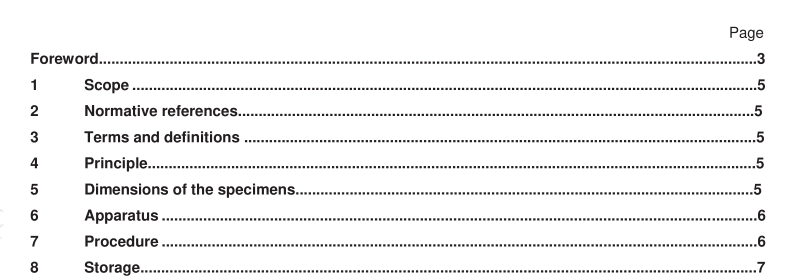BS EN 13286-51:2004 – Unbound and hydraulically bound mixtures — Part 51: Method for the manufacture of test specimens of hydraulically bound mixtures using vibrating hammer compaction

1 Scope
This document specifies test methods for making cylindrical or cubical specimens of hydraulically bound mixtures compacted to refusal density using a vibrating hammer. This document applies to mixtures, or that part of a mixture, containing aggregate up to a maximum size of 31 ,5 mm.
2 Normative references
The following referenced documents are indispensable for the application of this document. For dated references, only the edition cited applies. For undated references, the latest edition of the referenced document (including any amendments) applies.
EN 933-2, Tests for geometrical properties of aggregates — Part 2: Determination of particle size distribution — Test sieves, nominal size of apertures
EN 1 2390-1 , Testing hardened concrete — Part 1: Shape, dimensions and other requirements for specimens and moulds
EN 1 3286-4:2003, Unbound and hydraulically bound mixtures
Part 4: Test method for laboratory reference
density and water content
Vibrating hammer
3 Terms and definitions
For the purposes of this document, the terms and definitions given in EN 1 3286-4:2003 and the following apply.
3.1
vibrating hammer compaction to refusal
method of manufacture of a laboratory test specimen by compacting in layers an undefined quantity of mixture into a mould of known volume using a vibrating hammer and tamper until no further compaction is possible (refusal)
4 Principle
Cylindrical or cubical specimens of the mixture are made by vibrating hammer compaction to refusal. After compaction, the specimens are stored at a specified temperature and for a specified period of time minimizingloss of moisture until required for testing.
5 Dimensions of the specimens
Specimens shall conform to the dimensions given in Table 1 .
6 Apparatus
6.1 Cylindrical specimens 6.1.1 Moulds, whose dimensions conform to the specimen requirements in Table 1 . The moulds shall be strong enough to prevent distortion during compaction and shall be capable of being held rigidly in place with their base-plates during compaction.
NOTE Either metal, split or plastic moulds can be employed. Plastic moulds have been found to be particularly convenient for slow setting mixtures since the specimen can be left in the mould until the time of test. Reusable or disposable plastic moulds are also suitable for mixtures that need to be contained during storage that would otherwise disintegrate on extrusion from the mould immediately after compaction. Plastic moulds are also more suitable for mixtures that are corrosive to metal.
BS EN 13286-51:2004 – Unbound and hydraulically bound mixtures — Part 51: Method for the manufacture of test specimens of hydraulically bound mixtures using vibrating hammer compaction